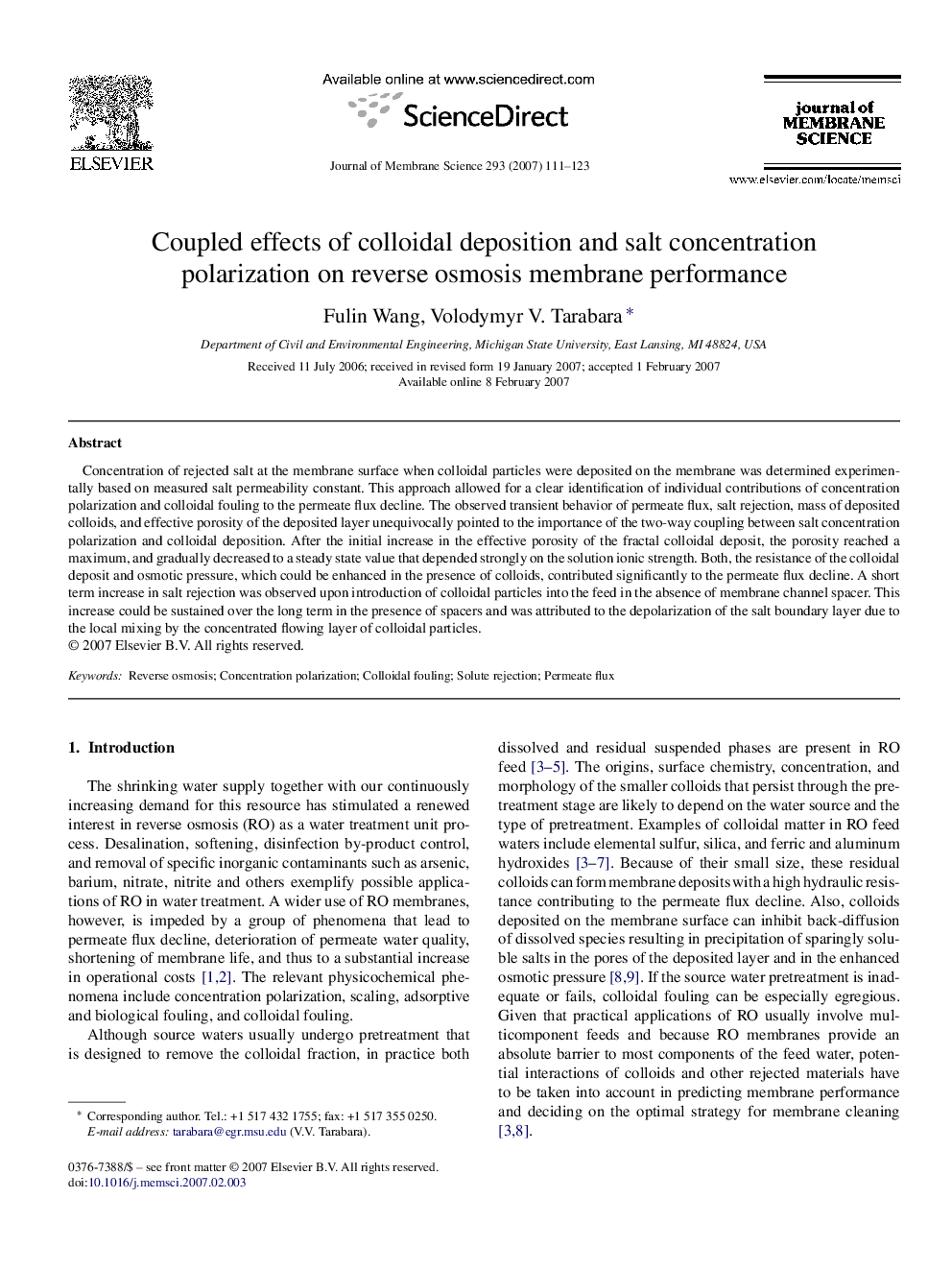| Article ID | Journal | Published Year | Pages | File Type |
|---|---|---|---|---|
| 638577 | Journal of Membrane Science | 2007 | 13 Pages |
Abstract
Concentration of rejected salt at the membrane surface when colloidal particles were deposited on the membrane was determined experimentally based on measured salt permeability constant. This approach allowed for a clear identification of individual contributions of concentration polarization and colloidal fouling to the permeate flux decline. The observed transient behavior of permeate flux, salt rejection, mass of deposited colloids, and effective porosity of the deposited layer unequivocally pointed to the importance of the two-way coupling between salt concentration polarization and colloidal deposition. After the initial increase in the effective porosity of the fractal colloidal deposit, the porosity reached a maximum, and gradually decreased to a steady state value that depended strongly on the solution ionic strength. Both, the resistance of the colloidal deposit and osmotic pressure, which could be enhanced in the presence of colloids, contributed significantly to the permeate flux decline. A short term increase in salt rejection was observed upon introduction of colloidal particles into the feed in the absence of membrane channel spacer. This increase could be sustained over the long term in the presence of spacers and was attributed to the depolarization of the salt boundary layer due to the local mixing by the concentrated flowing layer of colloidal particles.
Related Topics
Physical Sciences and Engineering
Chemical Engineering
Filtration and Separation
Authors
Fulin Wang, Volodymyr V. Tarabara,
